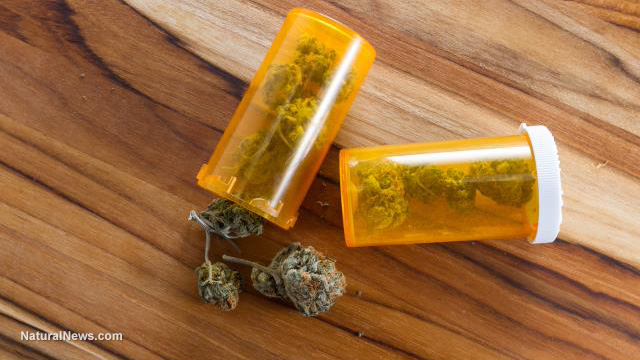Is cannabis the key to treating epilepsy?
02/22/2019 / By Vicki Batts

Over the last few years, there have been a number of anecdotal stories about people treating their seizures, or their child’s seizures with cannabis products. Charlotte Figi and her parents have become well-known for treating her seizures with a special strain of marijuana, affectionately named “Charlotte’s Web.” Charlotte had her first seizure at just three months old. But before long, she was having multiple seizures a day, and they could last for up to four hours at a time.
Charlotte was eventually diagnosed with Dravet syndrome, a rare seizure disorder — and she was suffering through an average of 300 grand mal seizures each week. All medications seemed to fail her, and eventually the family ran out of options, except for medical marijuana. After just a few doses of cannabis oil derived from a high-CBD low-THC plant, it became clear that the treatment was working. At six years old, Charlotte was down to just two or three seizures per month and was making great strides all around. And her story has inspired many others to believe that cannabis could be the cure they’ve been hoping for.
Families from around the world have reportedly been moving to states like Colorado, where medical marijuana is legalized, to obtain treatment for their sick children. While experts may caution against such a dramatic action — it speaks volumes about the desperation many parents feel when their children are sick and they have exhausted every possible alternative for treatment. And many parents say that even if the so-called experts claim there’s not enough proof of efficacy, the results they’ve seen in their children made the move more than worth it.

Research shows cannabis treatment works
Despite the obvious miracles cannabis has been providing to patients with intractable seizures, there has been a lot of skepticism about the plant’s medicinal value. A new study led by the University of Sydney, located in Australia, has surveyed the experiences and opinions of people who use cannabis to treat epilepsy. The survey garnered 976 respondents.
Just 14 percent of those surveyed reported using medical marijuana to treat their seizures. In total, 15 percent of adults with epilepsy and 13 percent of parents with epileptic children used or previously used the plant as a treatment modality. All respondents reported using cannabis as a means of managing treatment-resistant seizures or because the side effects of conventional medications were intolerable.
The study’s lead author Anastasia Suraev from The Lambert Initiative commented, “This survey provides insight into the use of cannabis products for epilepsy, in particular some of the likely factors influencing use, as well as novel insights into the experiences of and attitudes towards medicinal cannabis in people with epilepsy in the Australian community.”
Suraev went to note that while there are limitations to a retrospective online survey, the fact that a substantial number of adults and children are treating their seizures with cannabis and are reporting significant benefits of doing so simply should not be ignored.
A staggering 90 percent of adults using cannabis for epilepsy reported that the plant helped them to successfully manage their seizures. Another 71 percent of parents with children who suffered from seizures reported that cannabis use helped their offspring manage their condition. The numbers don’t lie: cannabis really is helping people. Research has also shown that it can be beneficial for other conditions, too.
The study’s co-author Carol Ireland, the CEO of Epilepsy Action Australia, commented that their data shows how important it is for healthcare providers to be educated on the potential benefits medical cannabis can provide to patients with epilepsy — especially when conventional treatment has failed them. Ireland also noted that their findings demonstrate a growing need to “provide safe and timely access to cannabinoid medicine in order to lessen people’s reliance on illicit black market products.”
Sources include:
Submit a correction >>
Tagged Under:
alternative medicine, cannabis cures, CBDs, Epilepsy, medical marijuana, natural cures, natural medicine
This article may contain statements that reflect the opinion of the author





















